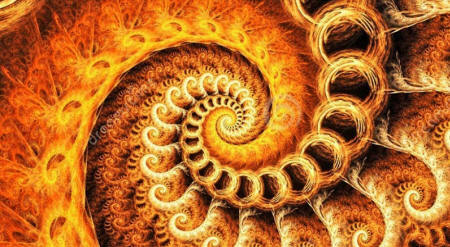|
As we look at this week’s evidence of gravitational waves and cosmic inflation, it’s becoming increasingly hard to believe that the observable universe we live in is the only universe there is.
Even modern science is laying down its "knowing" cap in the face of such a grand and complex puzzle: The makeup of the universe, including all that we cannot see (which is roughly 99% of the Universe).
Putting aside the hopelessly three-dimensional questions inflation raises, it’s unlikely that the story of the entirety of the cosmos (memorably defined by Carl Sagan as "all that is or ever was or ever will be") happened to begin with the oldest event we can record, and happens to extend only to the furthest horizon we can see.
If anything, Science is beginning to accept that it may very well have been the beginning of the latest "Cycle" of Universe (below video), of which before that was an infinite number of creations and manifestations in so many forms that not even taking DMT can create a comprehension of what that might look like:
But of course, we want to bridge this into Testable Science, beyond the realm of Theory and Philosophy - in order to take our understandings and use them to create better ways of life...
And so we ask the questions:
In this video you’re about to see, MinutePhysics breaks multiverse theories down into three categories.
They are:
Honestly, the Truth is always stranger than fiction, and the reality of the matter may in fact be some combination of all of them in a way that we may not even be mentally capable of understanding at this point in time.
Of the three, the many worlds hypothesis - the idea that every possibility creates a new universe in which it is actualized - gets the most attention in the Scientific Communities.
This is because of its similarity to the idea of mirror universes or parallel dimensions, of which has already been an established theory in many scientific fields, despite that it is by far the strangest and most complex.
Bubble universes, in contrast, are so simple as to be almost self-evident - now that we know our universe inflated much like a balloon, the conclusion that it was inflated with something from somewhere seems obvious. But theoretical physics is not the study of obvious conclusions, simplicity is no substitute for evidence, and questions of this scope are difficult to answer.
What is the most intriguing thing to me is that all of these theories are Fractal Geometries.
They all break down into smaller and smaller fractals of the bigger picture, the larger vibration. All the way to atoms and subatomic particles, which may indeed be tiny universes of their own.
This commonality may in fact be a bridge to our deepening understanding of reality, as Fractals are a basic mathematic function which are prevalent everywhere in nature and the cosmos around us.
|


